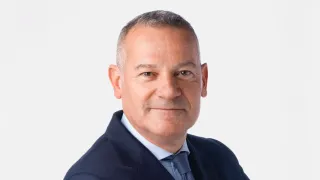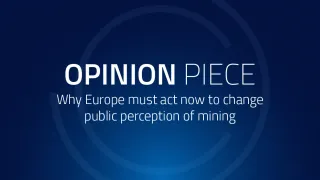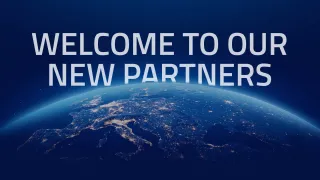
Responsible Sourcing
Securing sustainable access to raw materials for a carbon-neutral Europe
Europe is witnessing an epochal turning point for the raw materials sector. With an ambitious goal to become the first carbon-neutral continent by 2050, Europe relies on sustainable access to strategic critical raw materials to power the transition to a green and digital economy.
The global market has seen a massive supply chain disruption caused by the COVID-19 pandemic and Russia’s invasion of Ukraine. The over-dependence on critical raw materials will set the EU economy back from achieving the net-zero goal outlined in the European Green Deal. Europe must act now to diversify its supply chains, ramp up domestic sourcing, and build resilient value chains.
Europe must become more agile and self-reliant by building a certain level of strategic capacity along an entire value chain from mining and processing to recycling.
Vice-President Maroš Šefčovič at the Raw Materials Security of Europe Conference 2022
Responsible Sourcing Lighthouse
The fundamental role of mineral resources for a green transition
Europe’s clean, green, and digital future relies on minerals and metals sourced responsibly and managed sustainably along value chains. EIT RawMaterials Responsible Sourcing Lighthouse aims to support Europe’s innovation and education capacity to boost European mineral exploration and mining efforts (from greenfield to post-closure) and strengthen processing capabilities for critical strategic raw materials.
In this context, three approaches are at the core of Lighthouse Responsible Sourcing:
- achieving a more targeted and cost-effective exploration and quicker transition to mining operation
- reducing the environmental footprint of mining and processing
- improving the efficiency of mineral and metallurgical processing
Mineral exploration and mining face significant challenges around establishing a Social Licence to Operate (SLO). The Responsible Sourcing Lighthouse is instrumental in engaging stakeholders, including NGOs, and leading a constructive dialogue. These activities raise awareness and build trust, increasing acceptance of a renewed raw materials sector in Europe. Key areas regularly addressed within this Lighthouse’s scope are the Environmental, Social and Governance (ESG)-factors and the technical and economic challenges of the extractive sector.
Under the RawMatCop Academy, EIT RawMaterials offers the only online course in Europe providing training in how to apply the Copernicus satellite’s earth observation data to the raw materials sector. Earth Observation methods contribute to a safe and sustainable supply of mineral resources by improving the efficiency of operations and better measurement and compliance with ESG standards.
Digital transformation for a sustainable raw materials sector
A sustainable raw materials sector requires digital transformation. Digitalisation acts as a natural connector among all segments of the value chain. It can help to gain a more holistic understanding of processes and life cycles to boost efficiency and safety in exploration, mining and processing while reducing the environmental footprint – leading to a truly circular economy.
For example, EIT RawMaterials’ partner project, SOLSA-DEM’UP, led by Eramet, will introduce a game-changing technology for mineral exploration that combines analytical instruments and drilling with specific software, providing on-site, real-time, elemental, and mineralogical compositions of any type of core and sample. The project consortium will explore enlarging the field of applications to strategic sectors such as critical raw materials, environmental monitoring and rehabilitation of industrial sites, and extending software capabilities.
Another Responsible Sourcing Lighthouse example is the SEC4TD project, leading the digital transformation in mining safety and tailings dam monitoring. Led by Worldsensing, the project proposes an integrated end-to-end solution tailored to mining operators and service providers and offers data collection and visualisation, events prediction, effective information management and data traceability.
The SAFEME4MINE project is already at the commercialisation stage. Led by the Technical University of Madrid (UPM), the project developed a new preventive maintenance system for mining machinery safety. The new software increases employee safety in the mining sector and has already resulted in decreasing mining accidents by 66%.
EIT RawMaterials Swedish mining partner Boliden operates Sweden’s largest open pit net-zero Aitik copper mine. Aitik mine shows huge advances in the areas of safety, technology, decarbonisation, and recycling as well as gender equality among staff members.
Raw materials power clean energy technologies
Mineral and metals form the industrial base of the EU economy, including critical sectors, such as renewable energy, electric mobility, aerospace, and defence. Lithium, cobalt, nickel, manganese, and graphite (among other important elements) are essential building blocks for batteries. Currently, the EU produces only 1% of all battery raw materials worldwide, so the need to act is urgent.
Lithium and rare earths will soon be more important than oil and gas. Our demand for rare earths alone will increase fivefold by 2030.
European Commission President Ursula von der Leyen, State of the Union 2022
There is significant resource potential for all these commodities and smart solutions that reduce the environmental impact and costs of mineral exploration. There is also potential for responsible sourcing operations that can enable a competitive battery materials sector in Europe. Furthermore, processing facilities that apply leading-edge technology will play a vital role in decreasing dependency and improving efficiency in Europe’s growing battery sector.
The EIT RawMaterials community is working towards securing a sustainable supply of strategic critical raw materials for Europe. Innovation project LiRef, led by Northvolt, for example, is developing state-of-the-art technology for high-purity lithium hydroxide. The successful validation of the project’s solution will contribute to bridging the gap in the European battery minerals value chain with a commercially attractive, reliable, and sustainable lithium supply.
Key innovation trends supported under the Responsible Sourcing Lighthouse include:
Batteries: securing sustainable access to battery raw materials, including lithium, cobalt, nickel, manganese and graphite, through the introduction of smart solutions that reduce the environmental impact and costs for exploration, mining and mineral processing operations.
Magnets and motors: securing sustainable access and domestic sourcing of Rare Earth Elements (REE) with advanced exploration, responsible sourcing and mineral processing, addressing environmental challenges and improving the acceptance of mines and operations with SLO.
Over 90% of rare earth metals for clean technologies in Europe are imported from China, holding market dominance. Our Swedish partner LKAB is making a game-changing step towards Europe’s resilience and resource security, becoming the main owner of REEtec, a young innovative rare earth separation company based in Norway. Europe is witnessing a disruptive transformation of the domestic raw materials sector, establishing a strong Nordic value chain and securing a sustainable supply of rare earths in and for Europe.
Hydrogen technologies: responsibly sourced, secure, and sustainable supply of Critical Raw Materials such as Platinum Group Metals (PGM), cobalt, strontium, scandium, graphite, titanium, and REE and further strategic resources such as copper, nickel, and aluminium. Specifically, PGMs are essential for fuel cells.
Lightweight Materials: addressing the need to ramp up domestic processing capacities, diversify a sourcing portfolio and increase efficiency to establish cost-effective sourcing alternatives needed for magnesium.
Photovoltaics (PV): securing access to critical raw materials for the PV industry (boron, bismuth, gallium, germanium, indium, and silicon) with more efficient extraction from primary ores and waste materials, including tailings. Other materials used to manufacture PVs include silver, arsenic, and selenium, which may come with a supply risk.
Electronics (ICT): targeted exploration and resource efficiency, due diligence and traceability are pivotal aspects in securing access to all critical and strategic elements that are relevant for the above value chains, including tin, tantalum, tungsten, and gold – the so-called 3TGs, following international responsible sourcing standards set by the Organisation for Economic Co-operation and Development (OECD).


